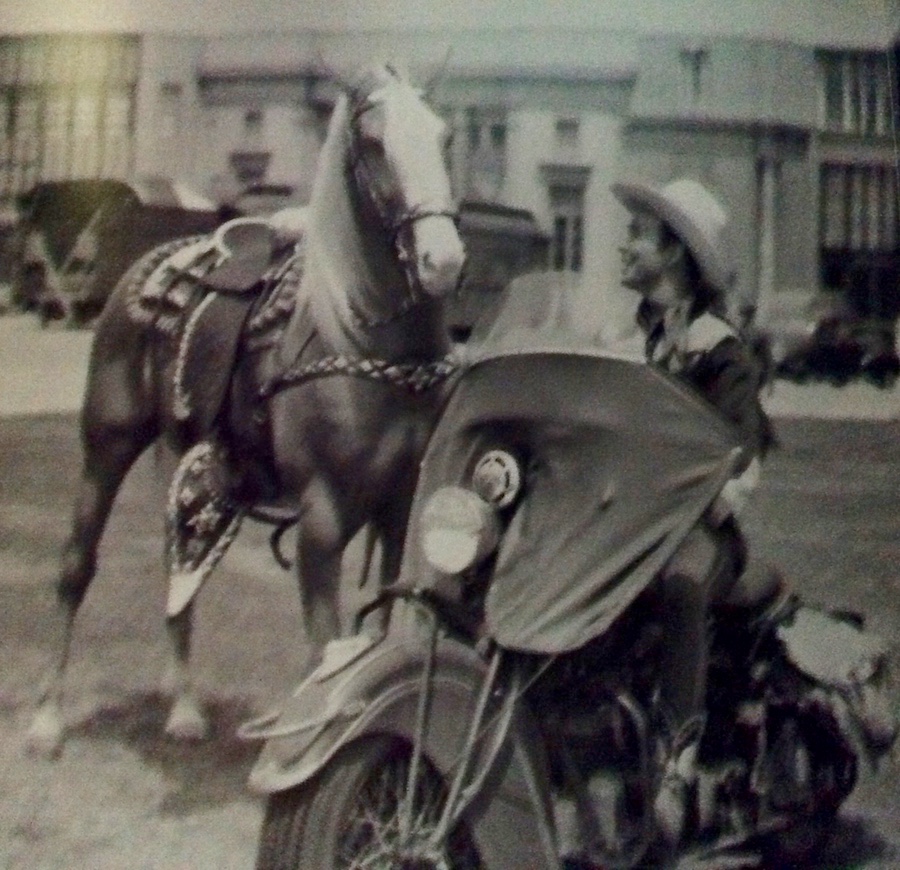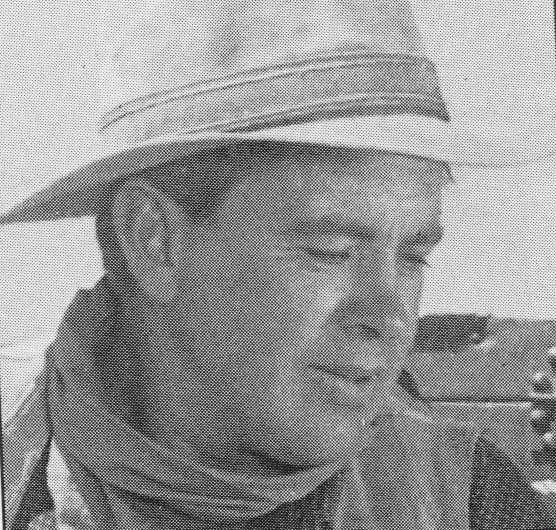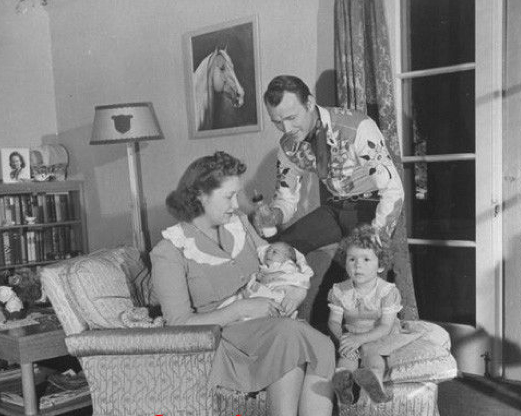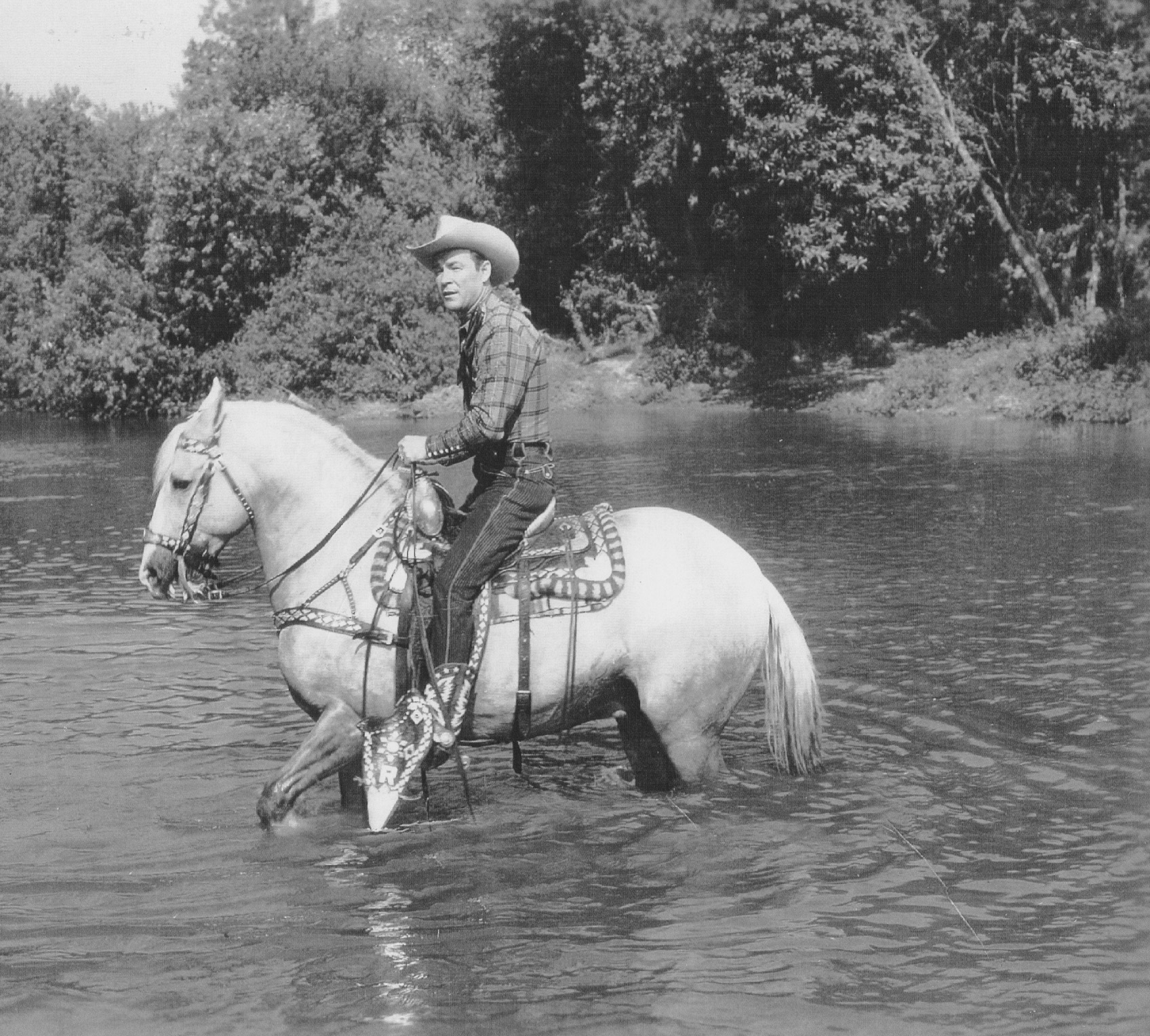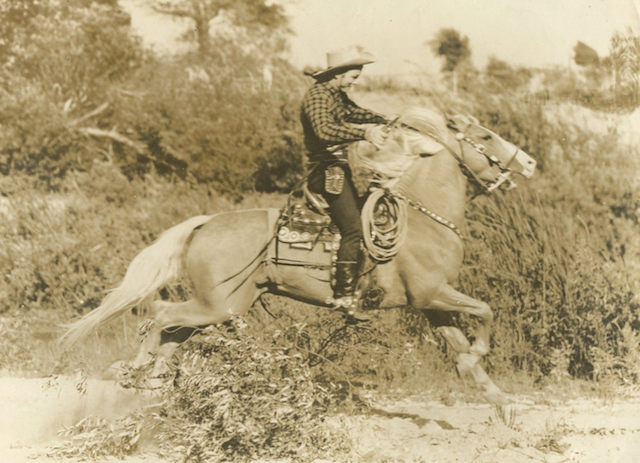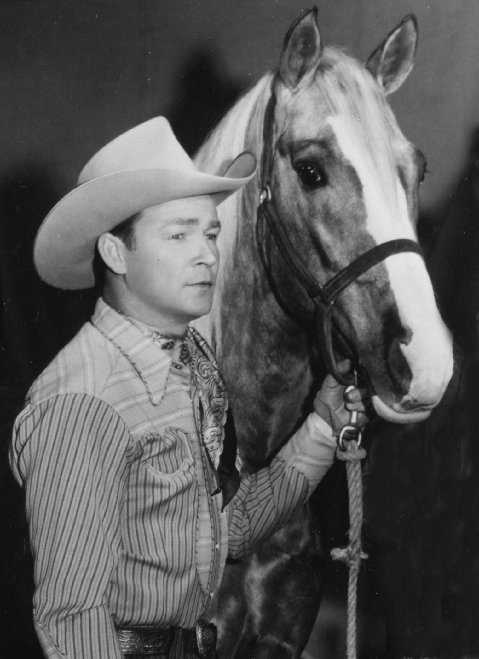May 22
SATURDAY EVENING POST – PART 4
Trigger is probably the only horse whose adoring public has forced to travel incognito. Formerly, when Rogers took him on tour, Trigger traveled in a glittering van, embellished with his name and pulled along by a station wagon. When he emerged from the padded splendor of the trailer’s interior, crowds materialized as if sprung-up from the ground. And, each goggling admirer seemed possessed of an itch to own a hair fromTrigger’s mane or tail. Before his first trip East was over, his tail and mane were almost stripped away. At one stop, Roy tried the device of engaging a group of soldiers to protect his steed’s rear while he himself stood guard over the palomino’s arching neck. Photographers were busily popping flash bulbs when, from the corner of his eye, Roy noticed unscheduled movements behind him. The soldiers guarding Trigger were calmly pulling hairs, one by one, curling them around their fingers and sticking them into their pockets to give to their small brothers or sons at home. After that, Roy walked behind Trigger himself, holding the precious tail. Notwithstanding these precautions, on the return to Hollywood it was necessary to shave Trigger’s tail and mane to get an even growth of hair. It was two months before the horse star was again presentable. (This version was mostly PR Department but the problem was real. Little Trigger [the horse that traveled] got mean from people trying to pull out souvenirs.)
To the consternation of his studio, Rogers streaks back and forth between his home and the Republic lot on a motorbike. He even roars home at noontime to let his 200 homing pigeons out for exercise. “Republic doesn’t like that motorcycle,” Rogers says. “I guess they’re afraid I’ll break my leg and they’ll have to shoot me.” In spite of Roy’s noontime homing pigeon habit, Republic declares that he is one of the hardest workers they have under contract. “He will pose for stills day and night without complaining,” they say gratefully. “And, he learns his lines quickly. He made six platters (large recording disks) for radio broadcasting at one sitting and made only one error while they were recording all six. He always reports on the set or location with his lines memorized and he’s never late.” Rogers calls tardiness plain meanness. (Dad was usually 30 minutes early for appointments. Anyone who was merely on time, Dad considered late!)
Until recently, a wrenched back and chronic arthritis kept him out of the Army or Navy (Dad eventually had to have 5 vertebrae fused). Special belts, designed as braces, together with clothing tight in the right places (and a really good stunt double, Joe Yrigoyen), have for years given his back enough support to enable him to work before the cameras–even on horseback. Both Rogers and Republic knew, however, that with Draft Boards scraping the barrel bottoms for every available man, his weak back might not be deemed an impediment to shouldering a rifle for long. To give Rogers his due, his attitude was “the sooner the better.” This Spring, the draft got around to calling him for his physical, weak back and all. He is making a hospital tour and after that, the Board wants to see him again. By the time you read this, he may be off to the nearest induction center. Republic is thinking about asking a girl cowboy star, such as Dale Evans, to hold the fort or rather the corral, if Roy is called away. But if he goes, he will leave Trigger to help. What Trigger thinks about the possibility of losing his boss may not be completely patriot. “But he’ll get over it,” Roy said. “After all, he’s got plenty of horse sense, hasn’t he?“
Dad’s stunt double at Republic, Joe Yrigoyen
Rogers’ real name is Leonard Slye. He doesn’t remember where he picked up the Rogers label. He thinks maybe the studio found it kicking around on the floor of what used to be Will Rogers’ dressing room. (Dad’s name was changed when Republic decided to star him in “Under Western Stars” and the execs didn’t think that Leonard Slye would look good on a theater marquee. Dad got his name in a meeting with the execs. Dad picked “Rogers” and then first names were thrown out until they hit on “Roy.”) Certainly it has that connotation in people’s minds, for he is constantly running into fans who think he is Will Rogers’ son. Even after he disabuses them of that notion, they remain unconvinced. “I knew your father,” they tell him stubbornly. “A fine man, Will.”
In a glass case at his San Fernando Valley ranchette are the gilded keys to nineteen cities that have been presented to him, and an Indian feather headpiece given to him when he was made an honorary chief of the Yakima tribe.
Every Tuesday night Rogers and The Sons of the Pioneers appear on the “Goodyear Radio Hour. ” The windup is always a message for kids, and it is delivered by Roy himself. He urges them to go back to school or, at the approach of summer, he advises them to get out and work on a farm. One of his radio duties is to answer letters from distracted mothers who can’t get Junior to tuck away the provender. “If you want to be a cowboy, eat your oatmeal,” Roy writes them.
The Rogers’ have two daughters, Cheryl Darlene–adopted–and Linda Lou. He calls his wife “Maw.” It started as a gag, but became a fixture.
Mommy (Arline) holding my new baby sister Linda Lou, Dad and me.
There is really more than one Trigger (this is the only time I remember Dad admitting this. Til the day he died, he insisted that there was only one Trigger “who made every picture” and completely ignored Little Trigger.) The horse with fifty stunts on tap is called Trick Trigger (really called Little Trigger) and is the Trigger whom Rogers takes with him on personal appearance tours.
Dad on Little Trigger.
There is still another Trigger (“The Old Man,” the original Trigger) with the same markings (the original Trigger only had one white stocking, the left rear and he was half-again larger than Little Trigger) who is quicker on his feet than Trick Trigger and is the Trigger used for quick movements and for chase sequences. Chase Trigger (never heard him called that) is flashing quicksilver on four legs. “He can run away from all of them.” Roy said. “He even outruns the camera car, and we have to make two or three preliminary runs with him to slow him down so it won’t look like I’m holding him back when they make the actual shot.”
Dad on Trigger, “The Old Man,” filming “Under Western Stars”
There is also a palomino colt (Trigger Jr.) with four white stockings and a creamy mane and tail who is being brought along to take Trick Trigger’s place if “anything happens” to the star of the Rogers equine ensemble–which is as close as anyone around the Republic lot comes to mentioning his possible demise.
Dad with Trigger Jr.
Rogers’ trainer suggested that perhaps I’d want to see Trick Trigger run through his repertoire of tricks. One by one, and with a minimum of exhortation and cuing, Trigger went through his routine. “A horse has to have an extra strong spine to walk on his rear feet,” the trainer remarked. “Trigger is as much a trouper as John Barrymore used to be. As soon as the audience begins to applaud, he goes into his bow. We don’t have to cue him for that. Roy bought him when he was a colt. He bought him on time (it was The Old Man that Dad bought on time). That was when Roy was a traveling radio singer. He ate when he had a job. Trigger ate then too. The rest of the time, they both cinched up their bellybands and tried not to think too much about food.” (Dad actually entered into negotiations to buy The Old Man during the filming of “Under Western Stars.” The studio had rented the horse originally named “Golden Cloud” from Hudkins Stables. Dad fell in love with him during the filming and rode him in every film (but “Son of Paleface”) and the TV series.)
When Roy finished his camera chore, he came back to say goodbye. Someone got the idea of having Trigger kiss me. Gravely, Randall wiped Trigger’s mouth with a cloth to diminish the dampness of the caress. A photographer recorded the event, and I shook hands with Roy.
Little Trigger throwing kiss to wounded soldier.
“I forgot to tell you,” he said as I was leaving, “I married that gal from Roswell, New Mexico–the one who brought us those big lemon meringue pies. She can still bake ’em.” The eyes that had glinted steel-blue across Iverson’s 600 acre frontier had a far-away look in them. “Maybe she’ll make one tonight.”
